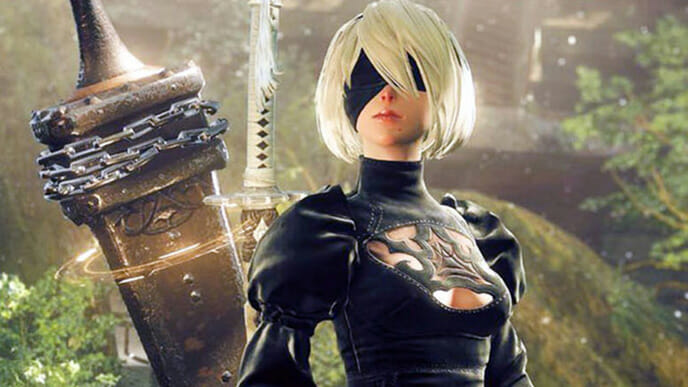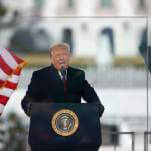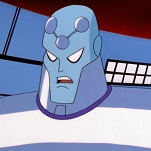Nier: Automata's Past Tells The Story of Our Apocalyptic Future

Last weekend I read that Norway will be expanding the World Arctic Archive to include a second doomsday vault, ensuring that historically important data will also be locked away in a secure holding facility close to the North Pole, joining a library of plant seeds held in the Svalbard Global Seed Vault designed to survive an apocalyptic event.
While the second vault is meant to serve as a failsafe in the eventuality of a major catastrophe — natural or man made — the news couldn’t help shake me in a way that’s been happening a lot lately. If the current political climate isn’t some kind of foreshadowing to some dark, coming events, I don’t know what is. And in this present, as various organizations join together to ensure the safety of precious knowledge in the face of certain doom, Nier: Automata’s commentary on the path human destruction only becomes more poignant.
The full Nier storyline is too complex for a quick explanation. The most recent game, Nier: Automata, can be summarized like this: thousands of years into the future aliens invade the Earth forcing humans to escape to the Moon. The humans leave behind an army of humanoid androids to fight on their behalf in a war to reclaim Earth from the extraterrestrial invaders and their own horde of violent machines. After centuries more of fighting, android soldiers 2B and 9S arrive on Earth as yet another pair of reinforcements in this never ending war.
Unbeknownst to either the machine or android armies, the humans and aliens who started the war and created sentient war toys to suffer in their stead, are long extinct, leaving behind an empty Earth where two artificially constructed factions are forced to play out the violence of their creators for all eternity. The cruelty of this irony is the engine that fuels much of the Nier: Automata’s story.
The game tackles humanist themes like war, violence and endless conflict through a cast of painfully humanlike beings and a host of unique gameplay tricks (for example, asking players to replay the game multiple times). Each playthrough unravels even more of the game’s complicated story and reveals the tragedy that plagues these characters as a result of human cruelty.
In particular Nier: Automata understands the meta of videogames and uses it against players in its quest to send an anti-war message. Is it a little on-the-nose that players are asked to explore a world of violence through a pair digital avatars, not unlike the actual androids and machines who are also artificial proxies forced into cruel and violent acts? Nier: Automata is filled with parallels to these conflicts with references and themes running only as deep as your understanding of human history. In a world full of fake humans and machines, thoughts of refugees, proxy wars waged by corporations and imperial powers, and the oncoming repetition of historical tragedy swims all around this beautiful hack-and-slash game.
By the end however, Nier: Automata ultimately argues for hope and redemption in the face of folly. After a grueling 30-plus hours of excavating the depths of human cruelty, the game ends on a prayer that the cycle of destruction might one day end. It’s a beautiful sentiment and something that touched my heart and brought me close to tears. The sadness that followed my playthrough was in knowing that it might be too late for this timeline to end prevent that fate for ourselves.







































